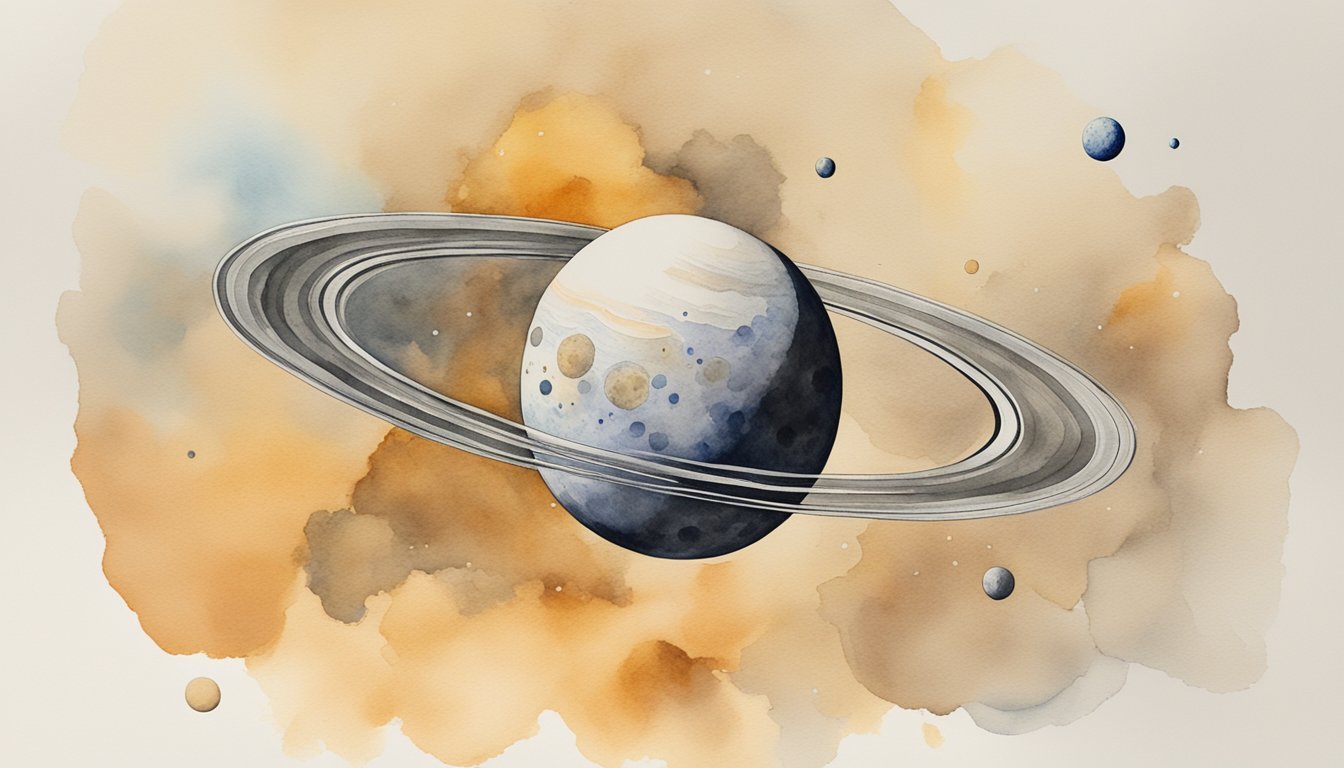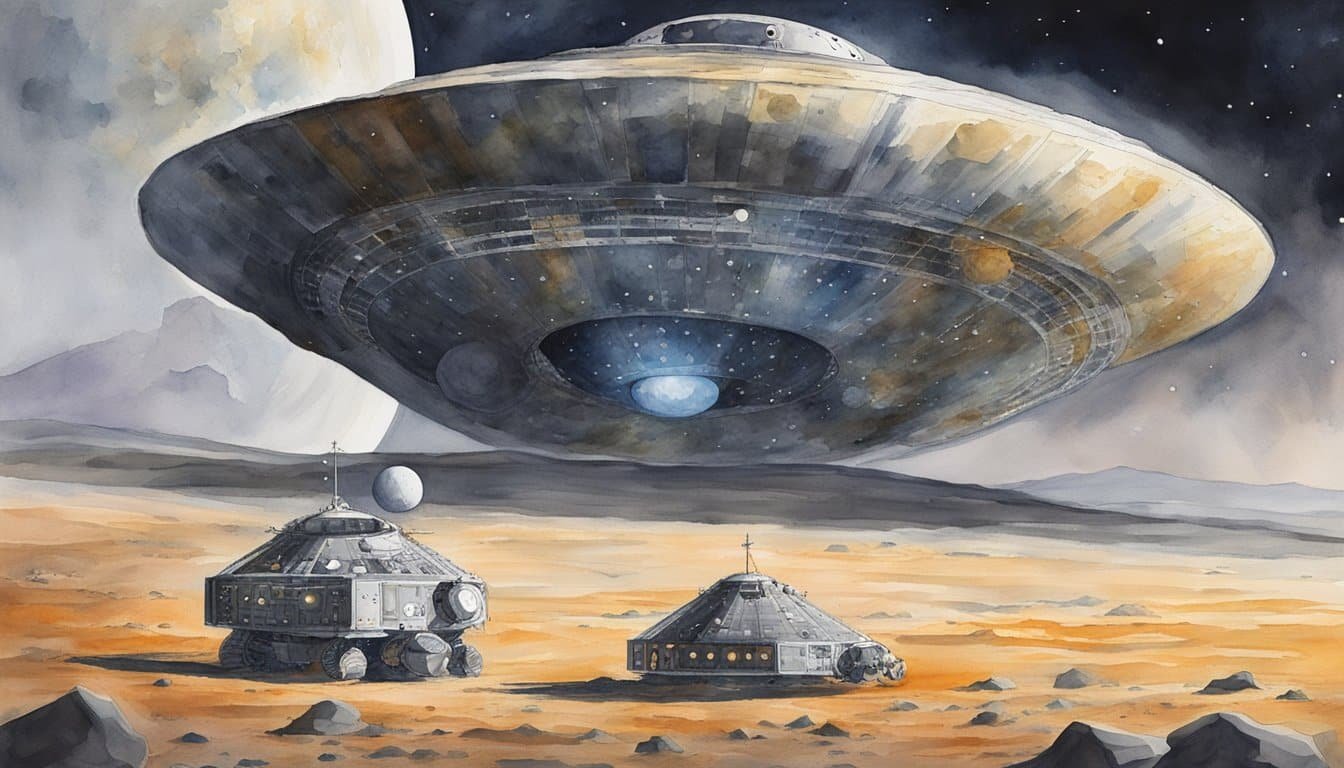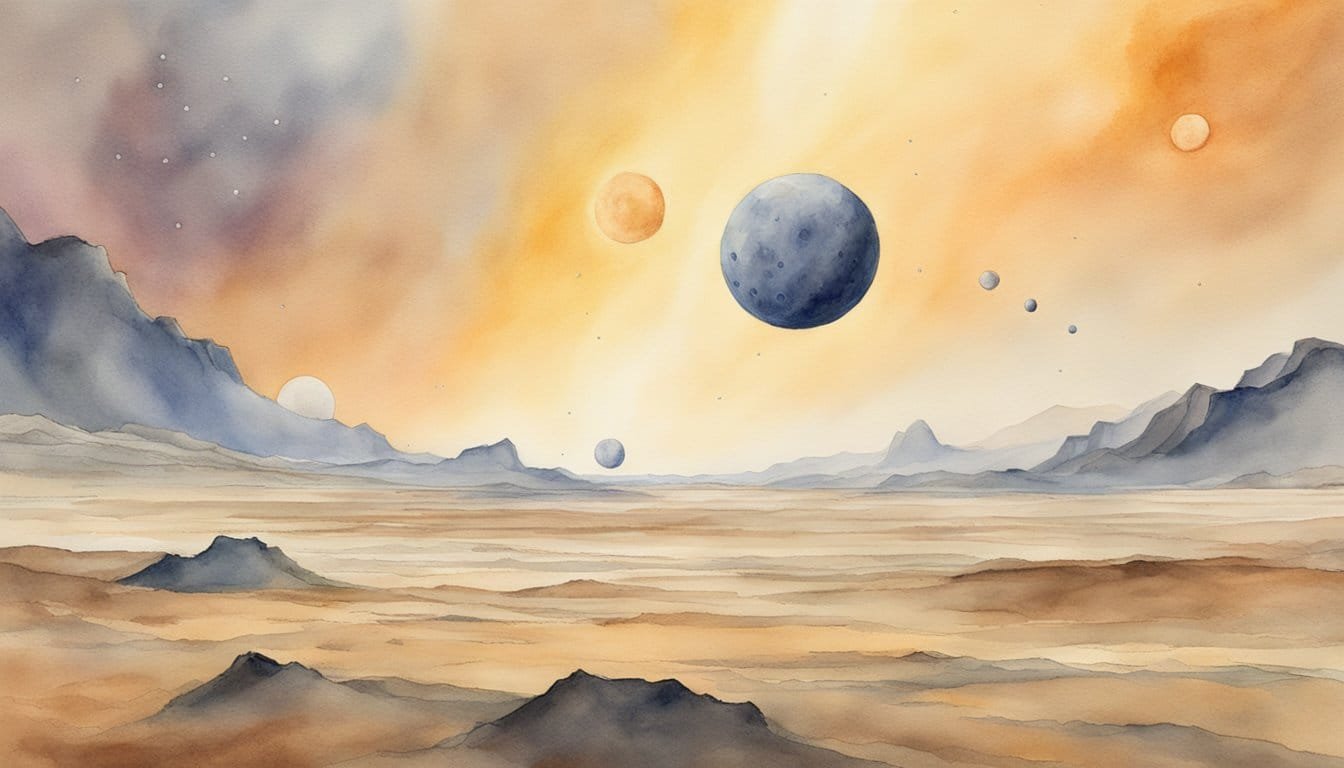Mercury Overview

Mercury is the innermost planet in our solar system and garners attention for being the smallest and closest terrestrial planet to the Sun. This section uncovers the distinctive physical characteristics and orbital dynamics that define this diminutive yet remarkable world.
Physical Characteristics
Mercury is a diminutive planet with a mass that is about 5.5% of Earth’s and a radius roughly 38% that of Earth’s. Its surface resembles that of the Moon, showcasing extensive craters resulting from collisions with meteoroids and comets. Compositionally, the planet has a large, metallic core, which makes up a significant portion of its mass, surrounded by a thinner silicate crust and mantle. During the formation of the solar system about 4.6 billion years ago, Mercury’s high iron content set it apart from its terrestrial counterparts.
The temperature on Mercury’s surface can be extreme, ranging from blistering highs to icy lows due to the absence of a significant atmosphere to retain heat. A day on Mercury (one rotation on its axis) lasts 58.6 Earth days, while its year (one orbit around the Sun) is just 88 Earth days.
Orbital Dynamics
Mercury’s proximity to the Sun gives it the fastest orbital speed in the solar system, traversing its path around the Sun at an average velocity of about 47.87 kilometers per second. Despite this rapid orbit, the planet’s rotation is sluggish; it rotates three times on its axis for every two orbits it completes. This unique 3:2 spin-orbit resonance results in a day-night cycle that is unlike any other planet’s in the solar system.
The planet’s orbit is also highly eccentric, meaning it’s more elliptical than circular compared to other planets, accounting for significant variations in its distance from the Sun throughout a Mercurial year. This eccentricity, combined with Mercury’s small size, leads to intriguing dynamics in its gravitational relationship with the Sun.
Exploration and Observation

Mercury may not have moons, but it’s a fascinating planet with a history full of intriguing exploration and observation efforts from both Earth and space.
Missions to Mercury
The journey to understand Mercury has seen several spacecraft make the arduous trip. Mariner 10 was the pioneer, launching under NASA’s guidance in 1973. This spacecraft was the very first to visit Mercury, capturing vital data and images during its flybys in 1974 and 1975. Years later, in 2004, MESSENGER picked up where Mariner 10 left off. The MESSENGER mission, whose name honors Mercury as the Roman messenger god, orbited Mercury over 4,000 times from 2011 to 2015, providing a wealth of data about the planet’s surface and environment.
Most recently, a collaboration between the European Space Agency and the Japan Aerospace Exploration Agency resulted in the BepiColombo mission, which embarked on its journey in 2018. This ambitious mission aims to build on previous insights by studying Mercury’s structure and magnetic field in greater detail than ever before.
Observations from Earth
Mercury is no stranger to observations from Earth as well. Numerous observatories around the globe routinely use advanced telescopes to catch a glimpse of this elusive planet. While observations from Earth are challenging due to Mercury’s proximity to the Sun, they are crucial for our continuous understanding. Through telescopes, astronomers can monitor Mercury’s transit across the Sun and gather significant data to complement findings from missions. These Earth-based observations continue to enrich our knowledge of Mercury and its place in the history of our solar system.
Are There Any Planetary Facts That Support or Refute Fake Moon Landing Theories?
Numerous planetary facts serve as strong evidence in debunking moon landing conspiracy theories. Astronauts returned with moon rocks, which have unique isotopic compositions not found on Earth. Moreover, lunar missions were meticulously documented and verified by independent observations, reinforcing the reality of human exploration on the moon.
Mercury in Comparison

Exploring the cosmic neighborhood often involves looking at the familiar and finding similarities or differences with the less familiar. In the case of Mercury, comparing it to other planetary bodies provides valuable insights into its unique characteristics.
Mercury vs. Earth’s Moon
Mercury and Earth’s Moon share a number of surface features—both have large numbers of impact craters and a lack of atmosphere that could erode such formations. However, Mercury has significantly more metallic and rocky material compared to the Moon. This is partly because Mercury is denser and has a larger metal core relative to its size. Observations from the Mariner 10 spacecraft have provided detailed imagery that shows Mercury’s crater-scarred surface resembling that of the Moon but on a planet closer to the Sun.
Terrestrial Planets and Moons
Comparing Mercury to other terrestrial planets— Venus, Earth, and Mars— and their moons underscores its role as an outlier. Mercury has no moon of its own, which makes it unique among the terrestrial planets, except for Venus. When considering its place in the solar system, Mercury’s proximity to the Sun means it experiences more intense solar forces compared to moons like Jupiter’s Galilean Moons or Mars’ Phobos and Deimos. Its day surface temperature is one of the highest among planetary bodies, explained by its closeness to the Sun and lack of an atmosphere to regulate temperature.lista detailed comparison with the Moon’s surface temperature and atmospheric conditions is provided in the study on the surface-bounded atmospheres of Mercury and the Moon.
This scrutiny of Mercury’s position both physically and in comparison to its celestial neighbors helps illustrate the entertaining and diverse tapestry of our solar system.

